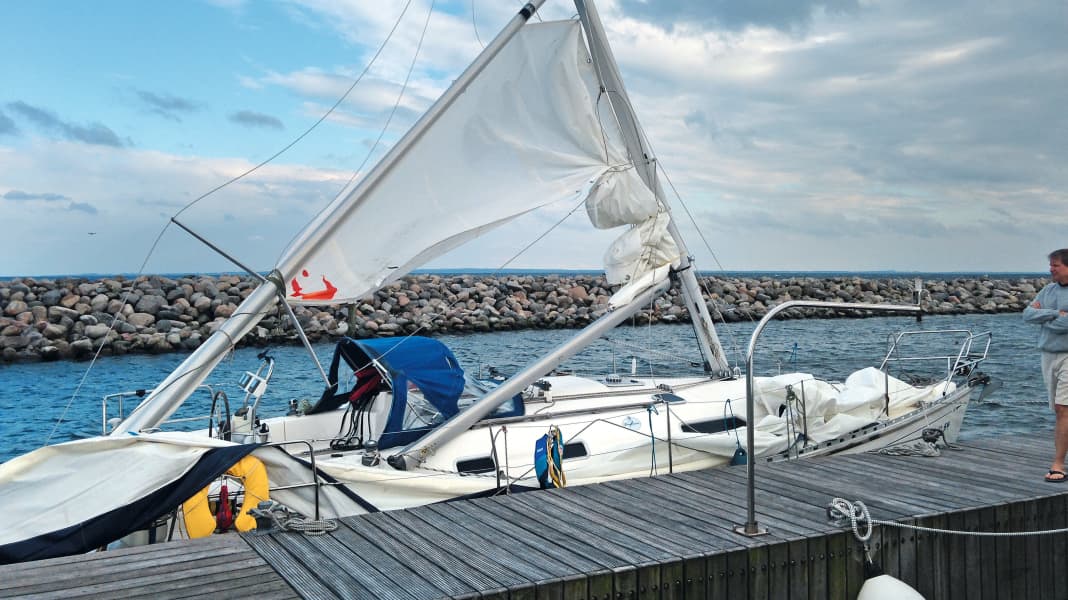Insurance: Are torn sails or mast breakages covered by the policy?

In a loose series, we therefore address the most frequently asked questions - and misunderstandings - about yacht insurance. In the first instalment, with the help of Dirk Hilcken from the boat insurance broker Pantaenius yacht insurance the fundamental Sense and purpose of a liability and comprehensive policy for the ship.
The second episode was all about the question, how high a ship should be secured. Especially if you buy a second-hand boat. Episode three dealt with the question, whether and to what extent older yachts should be insured. And in episode four we clarified, what the so-called personal effects are all about.
Today we answer the question of whether a torn sail or a broken mast are actually covered by boat insurance.
Dirk Hilcken explains:
As always, this depends on the conditions. Pantaenius yacht hull insurance is an all-risk insurance. Equipment and accessories are also covered. This basically means that the mast and sails are insured against all risks that are not expressly excluded under these conditions.
The question is: What is excluded? Sails, like car tyres, are wearing parts with a limited service life. With normal use, a sail loses its profile over time. The material is also destroyed by the sun over time. Damage caused by "wear and tear in normal use" and "normal weather conditions" is therefore excluded.
If you hoist a light wind spinnaker in normal conditions of 5 Beaufort, you will soon see it burst and have to chalk it up as a loss because the hull insurance will not cover the damage. However, if the sailcloth tears in a squall and the sail is damaged as a result, this damage is covered by hull insurance, at least with Pantaenius.
With rigging, a faulty split pin or improper pressing on the shroud can lead to a chain reaction, causing the mast to break. Such structural defects are generally excluded from property insurance policies. In Pantaenius' hull conditions, loss or damage - for example, mast breakage - caused to other parts of the insured property as a result of the defect or wear and tear is covered within the scope of the conditions. However, this is not the case with all conditions on the market.
Have the rig checked regularly
As such a mast breakage is not only material damage, but also puts the entire crew in extreme danger, every skipper is well advised to have their rig professionally checked regularly and to replace wearing parts. Conventional wire shrouds have a service life of 15 years or 20,000 nautical miles, depending on the area and mileage.
At Pantaenius, we ask about the age and condition of the rig when taking out the insurance and can then fully insure the masts as with new boats. Other insurers don't ask this because they use their terms and conditions and exclude cover for "inadequate maintenance" from a certain age.
We trust that owners will check their equipment for wear and tear, if only in their own safety interests. After all, if a broken mast leads to damage to life and limb, a new mast is little consolation.
More about boat insurance:
- Burglary, collision, accident: Checklist for the correct procedure
- What to do in the event of damage? Prevention, mitigation, settlement
- The right policy for everyone: 7 sailor types at a glance
- Attention, trap! How to read the small print
- Legal advice: The most important answers in the interview
- Contract types: What policies are available
It helps to remember the purpose of insurance: Insurance is there to protect the policyholder against sudden and unforeseen damage. Sudden and unforeseen is, for example, an accident or engine damage that causes someone to drive onto the rocks. Wear and tear due to use does not occur suddenly and unexpectedly, but is to be expected. Ideally, you should have wearing parts in stock or at least have something set aside for them.
The expert:

Latest news on the subject of boat insurance:
- Providers on a new course: changes in the German and Austrian boat insurance market
- New international travel health insurance for blue water sailors
- OSTSEE STURMFLUT Will the insurance companies pay for the damage?
- CHARTER-SPECIAL Properly insured for your boating holiday
- INTERVIEW Rights and obligations of injured parties
